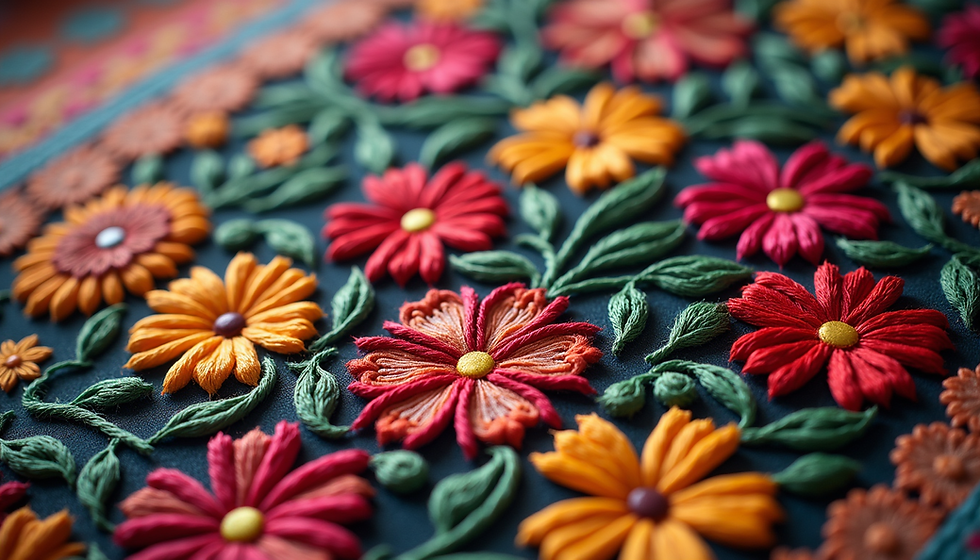- jkartsfoundation
- Sep 17
- 4 min read
When the Valley Turns to Amber: Harud in Kashmir

In the cultural and natural landscape of Kashmir, the changing of seasons is not merely a climatic event but a profound cycle that shapes the valley’s aesthetics, traditions, and life. Among the four seasons—Sonth (Spring), Grishm (Summer), Harud (Autumn), and Wandh (Winter)—the arrival of Harud (autumn) marks a particularly significant phase in Kashmiri life. Literally translated, Harud means “to gather” or “to harvest,” and as the word suggests, it is the time when nature, farmers, and artisans come together in celebration of bounty and transition. Known for its copper-golden landscapes, harvest rituals, and poetic reflections, Harud occupies a vital position in Kashmir’s cultural imagination.
Harud transforms the Kashmir valley into a living canvas of warm hues. The chinar trees (Platanus orientalis), an enduring symbol of Kashmir, undergo a spectacular transformation. Their lush green foliage turns into a mosaic of crimson, ochre, and copper, carpeting the ground in fiery leaves that rustle underfoot. This visual spectacle is so iconic that autumn in Kashmir is often referred to as the “season of gold.”
The lakes—Dal, Nigeen, and Wular—mirror these colors, while the Himalayan peaks in the backdrop begin to gather their first snow, creating a stark contrast of fire and ice in a single frame. For poets, painters, and photographers alike, Harud remains a source of eternal inspiration. Kashmiri literature and folklore are filled with metaphors that compare life’s transience to the falling leaves of autumn.
The etymology of Harud is grounded in agriculture. Autumn is the time when fields across the valley are filled with farmers harvesting the golden paddy crops. The image of farmers bending over rice fields, sickles in hand, against a backdrop of chinars is emblematic of Kashmir’s agrarian identity.
Beyond rice, autumn is also the season for walnuts, apples, and saffron—three pillars of Kashmiri economy and culture.
Apples: By late September and October, orchards in Sopore, Shopian, and Pulwama are laden with apples of countless varieties—Ambri, Delicious, and Maharaji. Apple harvesting is both a community and commercial activity, sustaining thousands of families.
Walnuts: Walnut trees, often centuries old, shed their prized fruits during Harud. The collection, drying, and cracking of walnuts are labor-intensive but yield one of Kashmir’s most valuable exports.
Saffron: In Pampore, fields turn purple with the blooming of saffron crocus. The delicate threads of saffron, painstakingly handpicked, symbolize both the fragility and resilience of Kashmiri culture.
Thus, Harud is not only aesthetic but also economic, a season that determines the well-being of households across the valley.
Harud is a season of gatherings. Families unite for harvest celebrations, sharing meals of freshly harvested rice, vegetables, and traditional delicacies, which begins to make an appearance as temperatures drop. This is also the time when weddings and community functions peak. The golden backdrop provides a perfect setting for rituals, songs, and dances. Folk songs sung during harvest reflect gratitude to nature and emphasize collective labor, reinforcing community ties.
Autumn also influences Kashmiri handicrafts. The motifs of chinar leaves appear frequently in carpets, shawls, papier-mâché, and embroidery, inspired directly by the fiery landscapes of the season. In this sense, Harud becomes a muse for artisans, embedding the colors of autumn into tangible works of art.
Harud in Kashmiri Poetry and Sufi Thought
Kashmir’s celebrated poets, from Lal Ded and Habba Khatoon to Mahjoor and Dina Nath Nadim, have evoked Harud in their verses. The falling leaves of the chinar often symbolize impermanence, reminding one of the fleeting nature of worldly life. Sufi poets, in particular, draw parallels between autumn and the spiritual journey, where detachment and surrender prepare the soul for inner awakening.
One popular Kashmiri proverb says:“Harud chukh wanai gindun” – Autumn is the time of reaping.It is both a literal and metaphorical reminder that every effort bears fruit, and every stage of life comes with its reckoning.
Harud is also one of the most enchanting seasons for tourism in Kashmir. Travelers are drawn to the valley to witness the chinar avenues of Srinagar, the apple orchards of Sopore, and the saffron fields of Pampore. Autumn treks through Dachigam and Gulmarg reveal landscapes that rival the best-known fall destinations in the world.
In Srinagar, a walk through the Nishat and Shalimar gardens during autumn is a sensory experience—the crunch of leaves, the fragrance of apple wood smoke from homes, and the crispness of the air all create a unique memory.
Harud is more than a harvest—it is a metaphor for life itself. Just as the season gathers the year’s labors, it also invites reflection on mortality and transience. The bare chinar trees that follow remind people of cycles of loss and renewal.
For the Kashmiri psyche, long accustomed to conflict, Harud embodies resilience. The leaves fall, but the tree stands; the fields are emptied, but they promise new sowing. Thus, autumn becomes a philosophy of endurance, patience, and hope.
While Harud has long been celebrated, climate change is altering its patterns. Unseasonal rains and changing temperatures affect the quality of apples and saffron. Walnut production has also suffered due to disease and erratic weather. Scholars and environmentalists warn that the visual grandeur and economic prosperity tied to autumn are increasingly vulnerable. Preserving traditional agricultural practices alongside modern interventions is becoming essential to sustain Harud’s legacy.
In Kashmir, Harud is not just a season—it is an experience of the senses, a rhythm of labor, and a canvas of meaning. It brings golden fields, crimson chinars, and purple saffron blossoms, but also carries within it the wisdom of impermanence and gratitude. As farmers gather their crops and poets gather their metaphors, Harud reminds Kashmiris that life’s beauty lies in both abundance and decline, in both the fullness of the harvest and the quiet promise of renewal.
For the valley and its people, Harud is the soul’s autumn—resplendent, reflective, and resilient.



Comments